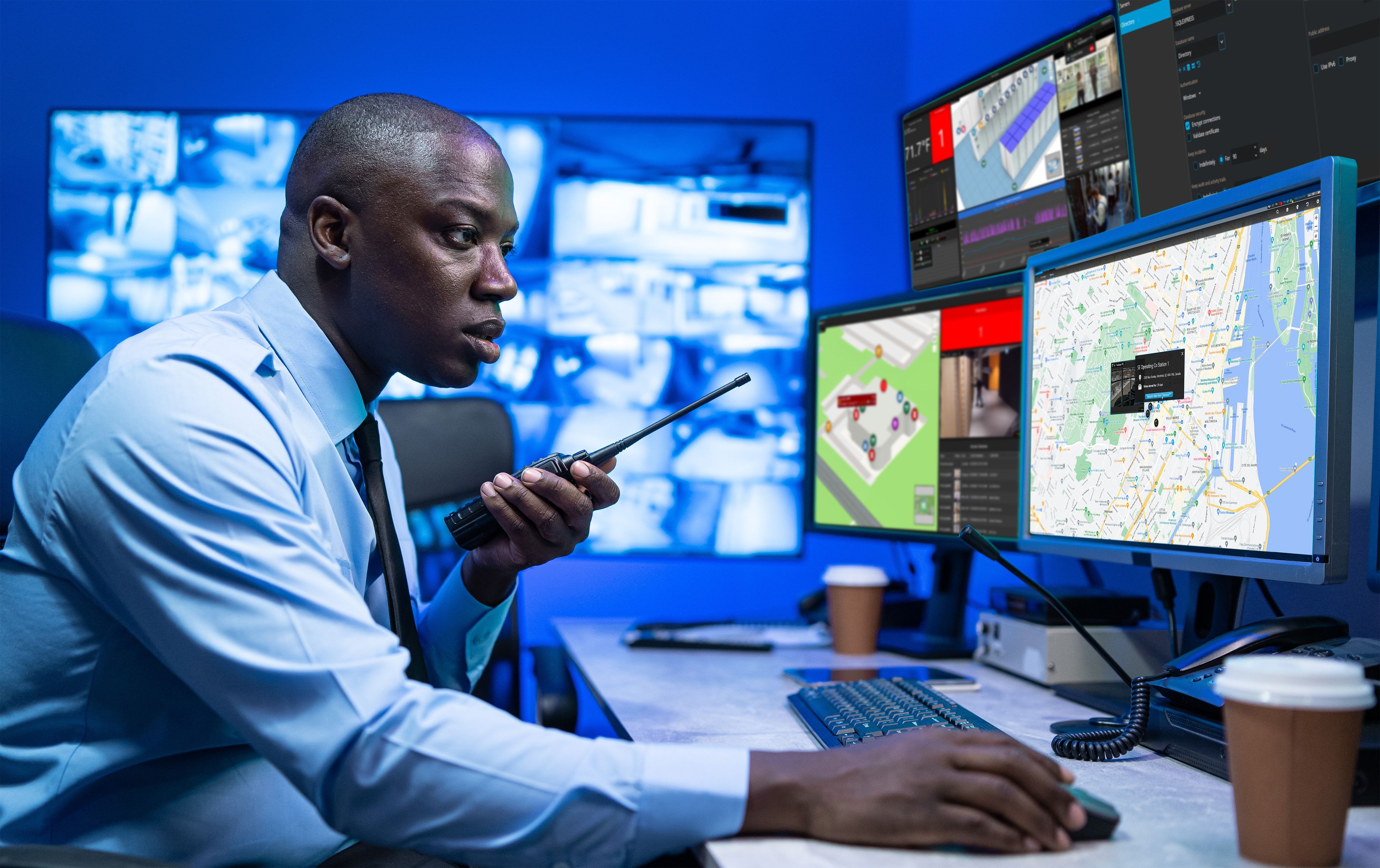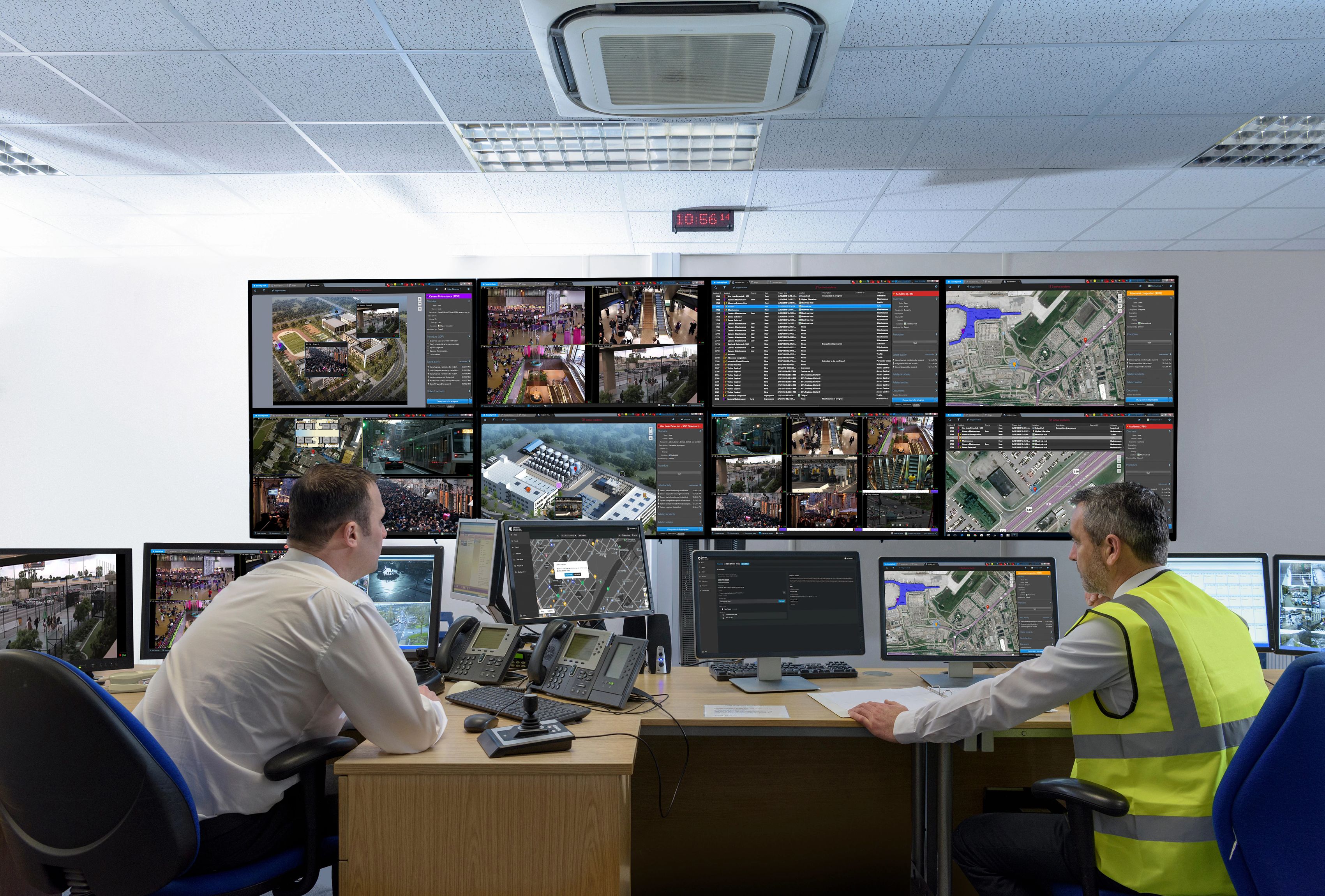How an RTCC leads to stronger public safety
Want to capitalize on public safety technology to reduce crime, speed up investigations, and boost officer safety? Explore the benefits of a real-time crime center (RTCC).

According to The National Real Time Crime Center Association, there are over 150 real-time crime centers (RTCCs) in the United States alone. And that number keeps growing. In the United Kingdom, a new national policing digital strategy aims to harness the power of data and technology to better protect communities. And in the Netherlands, use of big data applications in policing is creating more demand for IT expertise.
RTCCs (also known as security operations centers and/or command centers) are not just reserved for big cities and large public safety agencies. Big and small, cities everywhere are realizing how an RTCC can help harness existing technology investments to strengthen public safety initiatives and city-wide collaboration.
Find out about the top 5 benefits of an RTCC and how you and your team can build your own real-time crime center today.
WHITE PAPER
What is an RTCC in public safety?
Real-time crime centers (also sometimes referred to as command centers or security operations centers) act as crime-fighting nerve centers, unifying data streams and operations across city departments. Within these technological hubs, public safety and law enforcement teams can all work from one central source of real-time information and data. This helps speed up incident response times and investigations, while improving officer safety data collection across a city.
The most common technology used in RTCCs include:
- Automatic license plate recognition (ALPR) cameras
- Body-wearable and in-car video systems
- Computer-aided dispatch (CAD)
- Fleet monitoring
- Geographic information systems (GIS)
- Internet of Things (IoT) sensors (traffic, lighting, water usage, garbage collection, etc.)
- Video and audio analytics (gunshot, crowd, and object detection, facial recognition, etc.)
- Video surveillance cameras
At its core, an RTCC is built on a foundational, front-end solution where operators can work from a single pane of glass. Bringing data from various systems and sensors together provides public safety teams with real-time situational awareness and support when they need it.
By correlating all incoming information and using analysis tools, officers can be pointed to the most pressing situations. And all relevant video and data can be displayed on an interactive city map for context to make faster, more informed decisions.

Top 5 benefits of building an RTCC
Agencies of all sizes can capitalize on existing technology investments to drive higher levels of efficiency, information-sharing, and collaboration across public safety operations. How? By building an RTCC. Here are some of those benefits:
 |
Support crime reduction |
An RTCC creates opportunities for public safety teams to use intelligence and automation, allowing them to work smarter and faster. This leads to faster responses and more in-depth investigations. There’s also an opportunity to identify crime hotspots, trending patterns, and process improvements. All of this can help deter bad actors and reduce offenses across communities.
REPORT
 |
Streamline incident response |
When an incident occurs, everything from 911 calls and dispatch information to live video, and various sensor data stream onto video walls and monitors for all RTCC operators to see. This helps to quickly understand what’s happening and effectively deploy resources to mitigate the situation. Overall, there’s less guesswork and greater automation, helping to improve response efficiency.
CUSTOMER STORY
 |
Speed up investigations |
An RTCC can save countless hours in investigative work while increasing clearance rates. Having a central repository for collecting, managing, and storing city data makes it easier than ever to compile evidence during and after incidents. And a digital evidence management system can help to maintain data integrity and privacy when sharing information.
VIDEO
 |
Improve officer safety |
Having an RTCC means public safety operators can provide data-driven virtual assistance to in-field officers. This allows responding officers to understand what’s happening, and better prepare for the situation. Operators can also monitor nearby cameras to ensure everything goes smoothly. This virtual support helps keep officers out of harm's way during everyday incidents or large city events.
CUSTOMER STORY
 |
Enhance city-wide collaboration |
Within an RTCC, police and public safety teams share the same view of what’s happening across the city. They can also forge partnerships with private businesses and residents, requesting access to public-facing cameras during investigations. Connecting to video cameras and other IoT sensors from city agencies helps broaden their view even further. This data can also lead to additional insights that can enhance everything from disaster recovery to sustainability initiatives.
Start building a successful RTCC
Building an RTCC from scratch can feel like an overwhelming endeavor. But it’s not as complex as you might think. If you’re at the beginning of your RTCC journey and wondering where to start, you’re in the right place.
Dive into how an RTCC can transform your public safety operations and get practical tips about technology and space planning, funding strategies, and stakeholder involvement which are all critical for a successful RTCC.
